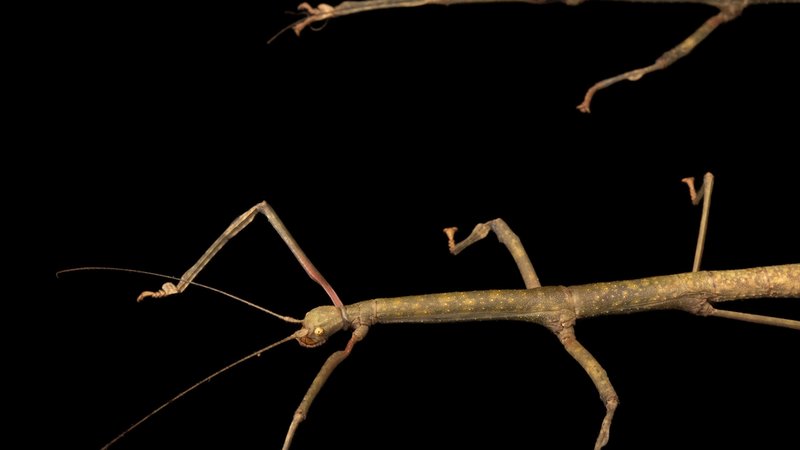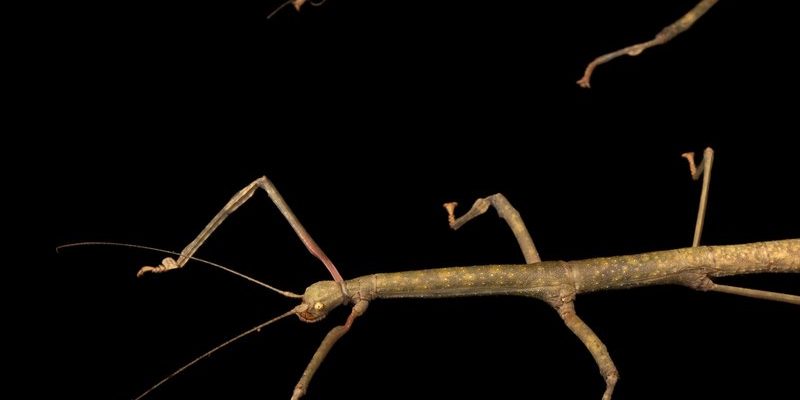
As we dive deeper, we’ll not only explore the characteristics of stick insects but also compare them with a few other intriguing insects that share their leafy disguise. Think of this as a cozy chat over coffee where we unravel the world of these masters of camouflage. So grab your favorite cup, and let’s get started!
What are Stick Insects?
Stick insects, or phasmatodea, are a group of insects that mimic twigs or branches as a survival strategy. This camouflage helps them avoid predators, as they can blend seamlessly into their surroundings. They come in various shapes and sizes, with some even resembling leaves! This level of mimicry isn’t just a cool party trick; it’s essential for their survival in the wild.
You might be wondering, how do these insects achieve such lifelike mimicry? Well, their bodies are elongated and often covered in a textured surface that looks like bark or leaves. Some even have additional adaptations, like the ability to sway gently, mimicking the motion of a real twig in the breeze. Isn’t nature just brilliant?
Similar Insects: An Overview
Beyond the stick insect, several other insects share similar traits. Two of the most notable are the leaf insect and the mantis. While they may look quite different at first glance, they also use mimicry to evade predators. Let’s take a closer look at them.
– Leaf Insects: Leaf insects (Phylliidae) take the camouflage game to another level. They not only resemble leaves in shape but also in color and texture. With their broad, flat bodies, they can easily blend into the foliage. This defensive mechanism allows them to slip under the radar of hungry birds and other predators.
– Praying Mantis: This insect is known for its unique posture and hunting style. While they aren’t as adept at mimicry as stick or leaf insects, some mantis species can resemble flowers or foliage, providing them cover as they stalk their prey.
Camouflage Techniques
Stick insects primarily rely on their physical appearance for camouflage, but their behavior also plays a crucial role. When threatened, they often remain completely still, adopting a “don’t see me” stance, which can be very effective.
Leaf insects take this a step further with their vibrant colors and flat bodies. They mimic not just the visual aspects of a leaf but also blend in with the patterns of sunlight and shadow that play on leaves.
Conversely, mantises employ a more dynamic strategy. While they may not be the best at blending in, their quick and agile movements help them catch prey while staying hidden among plants.
Habitat and Distribution
Stick insects predominantly inhabit tropical and subtropical regions, preferring areas rich in vegetation. You’ll find them in places like Southeast Asia, Australia, and parts of Africa. Their diverse habitats range from rainforests to woodlands, where they can find plenty of branches to hang out on.
Leaf insects also share a fondness for lush environments, often residing in similar regions as stick insects. Their affinity for specific plants makes them a bit more limited in distribution.
Meanwhile, mantises are more adaptable. They can be found in various environments, from gardens to grasslands, and even in more temperate regions. This adaptability can give them an edge in survival compared to their stick and leaf-loving relatives.
Life Cycle and Reproduction
The life cycle of a stick insect is quite fascinating. They begin as eggs that resemble seeds on the ground. Once they hatch, the young nymphs look like miniature versions of adults, but they may not camouflage as well right away. As they grow, they molt several times, gradually improving their mimicry skills.
Leaf insects have a similar life cycle, but their eggs are more often hidden among plant debris to avoid detection. Their nymphs also resemble miniature adults right from the start, which helps them survive in the wild.
On the flip side, mantises have a more unique approach. They lay their eggs in a protective case known as an ootheca. Once they hatch, the young mantises emerge looking quite different from their adult forms—smaller and less leaf-like. They gradually develop their hunting skills while learning to blend in over time.
Diet and Feeding Habits
One thing all these insects have in common is their vegetarian diet, mostly consisting of leaves and foliage. Stick insects tend to prefer a specific type of plant depending on their species, which can range from eucalyptus to bramble.
Leaf insects, as their name suggests, are leaf aficionados. They have a more specialized diet and can often be found munching on specific plants they can mimic.
While mantises are not strictly vegetarians, they generally start their lives feeding on smaller insects. However, adult mantises are known for their predatory behavior. They’ll hunt and eat other insects, showcasing their agility and speed rather than relying on mimicry for survival.
Conservation Status and Threats
Sadly, many species of stick insects, leaf insects, and mantises face threats due to habitat destruction and climate change. Deforestation is a significant issue, especially for stick and leaf insects that rely heavily on specific plants for camouflage and food.
Conservation efforts are underway in various regions to protect these unique insects, but awareness is still vital. Supporting conservation initiatives or simply growing native plants in your garden can contribute to their survival.
In the case of mantises, although they are less threatened, they still face challenges due to pesticide use and habitat loss. For all of these insects, even small actions can make a big difference in their preservation.
The Fascinating World of Insect Mimicry
The world of stick insects and their lookalikes is a wonderful example of nature’s creativity. Through their stunning mimicry, they not only survive but thrive in their environments. Understanding these insects sheds light on the delicate balance of our ecosystems and the importance of protecting these remarkable creatures.
We’ve explored the stick insect, its lookalikes like leaf insects and mantises, and the similarities and differences in their lives. So, next time you step into the woods or your backyard, take a moment to appreciate these masters of disguise. You might just find a hidden stick or leaf insect waiting patiently for the world to pass by.

